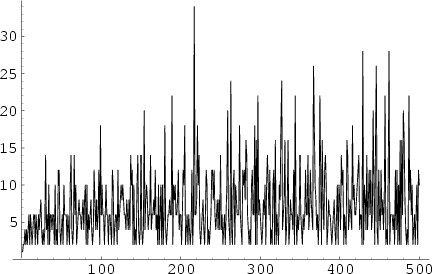|
|
|

An integer ![]() is called a Jumping Champion if
is called a Jumping Champion if ![]() is the most frequently occurring difference between consecutive
primes
is the most frequently occurring difference between consecutive
primes ![]() for some
for some ![]() (Odlyzko et al. ).
(Odlyzko et al. ).
See also Andrica's Conjecture, Good Prime, Jumping Champion, Pólya Conjecture, Prime Gaps, Shanks' Conjecture, Twin Peaks
References
Bombieri, E. and Davenport, H. ``Small Differences Between Prime Numbers.'' Proc. Roy. Soc. A 293, 1-18, 1966.
Erdös, P.; and Straus, E. G. ``Remarks on the Differences Between Consecutive Primes.'' Elem. Math. 35, 115-118, 1980.
Guy, R. K. ``Gaps between Primes. Twin Primes'' and ``Increasing and Decreasing Gaps.'' §A8 and A11 in
Unsolved Problems in Number Theory, 2nd ed. New York: Springer-Verlag, pp. 19-23 and 26-27, 1994.
Odlyzko, A.; Rubinstein, M.; and Wolf, M. ``Jumping Champions.''
http://www.research.att.com/~amo/doc/recent.html.
Riesel, H. ``Difference Between Consecutive Primes.'' Prime Numbers and Computer Methods for Factorization, 2nd ed.
Boston, MA: Birkhäuser, p. 9, 1994.
Sloane, N. J. A. Sequence
A001223/M0296
in ``An On-Line Version of the Encyclopedia of Integer Sequences.''
http://www.research.att.com/~njas/sequences/eisonline.html and Sloane, N. J. A. and Plouffe, S.
The Encyclopedia of Integer Sequences. San Diego: Academic Press, 1995.